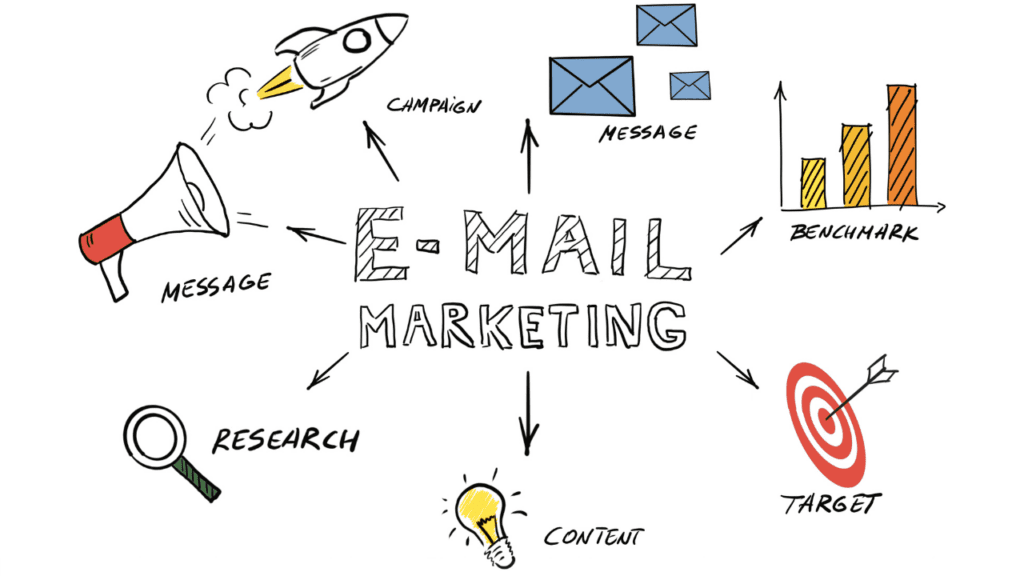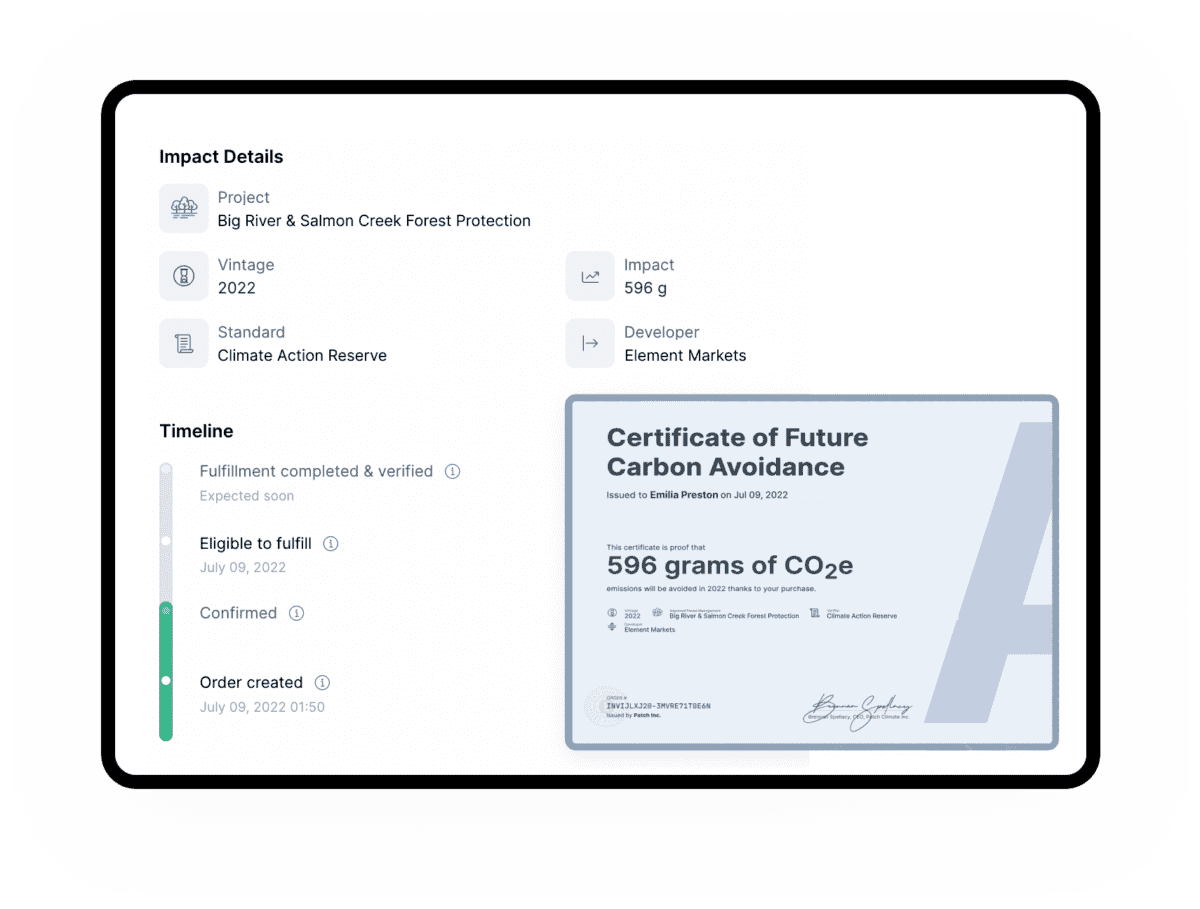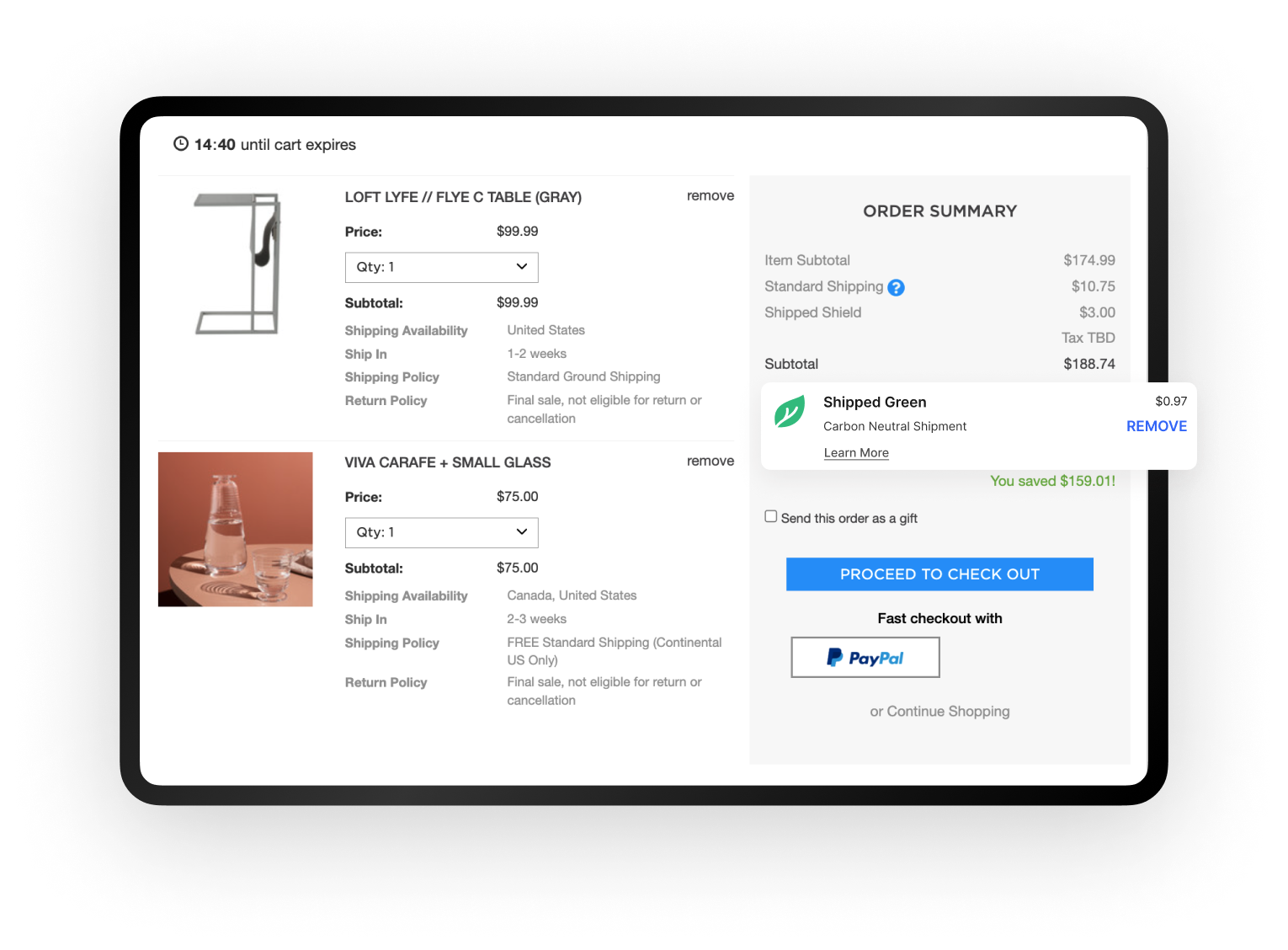How to Turn Ecommerce Losses into Profits: A Strategic Guide
Shipped
on
May 31, 2023
Ecommerce can be a tricky business. With customers expecting convenience and personalization, businesses must stay on top of their game to remain competitive. Unfortunately, this means that losses are often unavoidable for even the most successful ecommerce companies.
In 2023, the ecommerce industry is predicted to generate $6.3 trillion globally, and the competition is intense. As a business owner, it is crucial to have a strong strategy to transform losses into profits. Every business faces unique circumstances, but there are strategic actions that can universally help steer your ecommerce venture toward profitability. In this guide, we will explore the steps to turning ecommerce losses into profits, providing you with a roadmap to success.
The Power of Website Optimization
First impressions count, and in ecommerce, your website is often the first point of contact with potential customers. A user-friendly, aesthetically pleasing website with seamless navigation can significantly boost conversion rates. Ensure your website is optimized for speed, mobile responsiveness, and intuitive user experience. A clean and organized layout, clear call-to-action buttons, and a simple checkout process can drive sales.
Mobile optimization is especially crucial. With the increasing use of smartphones for online shopping, optimizing your ecommerce website for mobile devices is essential. According to Google, 76% of consumers who search on their smartphones visit a related business within a day, highlighting the importance of mobile-friendly SEO.
How to Optimize Your Website for Performance
Your website must be optimized for performance, including load time speed and mobile responsiveness. Start by reducing the size of all images used on your site, and compress them as much as possible without compromising the quality. Next, reduce the number of plugins and scripts in use. Too many can slow down loading times, so ask yourself if you need each one or if you could remove some to speed things up. Also, ensure that your website is mobile-friendly by using a responsive design and minimizing the number of redirects when loading pages on mobile devices.
You also need to ensure your user experience is intuitive and easy for customers to navigate. Ensure all the information a user needs is easily accessible, and don’t forget to include helpful visuals such as videos or images. You should also make sure your product pages are well-organized and contain detailed descriptions, price points, images, videos, customer reviews, etc. This will ensure that customers know exactly what they’re buying before purchasing.
The Art of Crafting Product Descriptions
In the virtual world, customers rely heavily on product descriptions. Therefore, crafting accurate, engaging, and detailed descriptions for your products is crucial. Highlight the key features, benefits, and specifications compellingly. Utilize high-quality photos and videos that showcase the product from various angles, enabling customers to visualize it more effectively. Detailed product descriptions reduce return rates, enhance customer satisfaction, and drive sales.
How to Make Your Product Descriptions Stand Out
You must avoid generic sales copy to make your product descriptions stand out. Instead of just listing features and benefits, tell a story that will capture the customer’s attention and entice them to buy. Leverage storytelling techniques to paint a picture for potential buyers and explain why this particular product is perfect for them.
A good product description should include both the practical and emotional benefits of the product. For example, if you sell winter gloves, explain how they will keep your hands warm and cozy on a cold winter day. Beyond that, emphasize why these gloves are the right choice for the customer’s unique needs.
Leverage Visuals to Showcase Products
Visuals are a powerful tool for ecommerce businesses, and there is no better way to show off products than through images. Images allow potential customers to visualize what they would look like wearing or using the product in real life. If you are selling apparel, offering photos of models displaying different outfits can effectively showcase your items.
The Magic of SEO

Search engine optimization (SEO) is a potent tool that brings organic traffic to your site. By effectively using keywords, optimizing meta descriptions and title tags, and creating valuable, shareable content, your ecommerce site can rank higher in search engine results, attracting more potential customers.
Conduct keyword research to identify and incorporate relevant keywords throughout your website. Regularly create informative and engaging content that satisfies search engine algorithms and provides value to your target audience. A strong SEO strategy can significantly improve your visibility and drive organic traffic, increasing sales and profitability.
Implementing SEO strategies can lead to a significant increase in organic traffic to your ecommerce website. According to a study by BrightEdge, organic search drives 51% of all website traffic, making it a crucial channel for ecommerce businesses. Search engine optimization on your ecommerce site will ultimately lead to the following:
- Higher Conversion Rates: SEO-optimized websites have higher conversion rates than non-optimized ones. Research shows that the average conversion rate for organic search traffic is around 16% compared to other methods.
- Improved Brand Visibility: Ranking higher in search engine results pages (SERPs) increases your brand’s visibility and exposure to potential customers. According to a study by Advanced Web Ranking, the first organic search result on Google receives an average click-through rate (CTR) of 27.6%, ten times more likely to be clicked than the number ten spot.
- Increased Trust and Credibility: Appearing on the first page of search results establishes your brand’s credibility in the eyes of consumers. Research by Hubspot reveals that 75% of users never scroll past the first page of search results, emphasizing the importance of ranking high to build trust with your target audience.
SEO is an ongoing process that requires regular monitoring, optimization, and adaptation to algorithm updates. However, the efforts invested in SEO can have long-lasting benefits. Research by Moz indicates that the average time for a page to reach one of the top 10 positions in search results is around three years, highlighting the importance of consistent SEO efforts for long-term success.
Leveraging Email Marketing

Despite the rise of social media, email marketing continues to offer one of the highest returns on investment in the ecommerce industry. Build an email list of your customers and utilize it strategically to nurture relationships and drive sales. Implement automated email campaigns, such as abandoned cart reminders, personalized product recommendations, and exclusive offers for loyal customers.
Utilizing email marketing is a great way to bridge the gap between your website and customers, and a few best practices will help ensure you’re getting the most out of your efforts. Here are some tips to help improve your ecommerce email marketing:
- Organize your email list based on customer profiles for targeted messaging
- Offer rewards for long-term customer loyalty
- Use split testing to compare the effectiveness of different email campaigns
- Follow up on abandoned shopping carts with reminder emails
- Notify customers when out-of-stock items become available again
- Offer special promotions during seasonal events
- Track your email marketing results to understand what works best
- Automate your email campaigns to save time and maximize efficiency.
Personalize your emails based on customer preferences, purchase history, and browsing behavior to create a more tailored and engaging experience. Email marketing is a versatile tool for customer retention, upselling, and cross-selling, helping you turn losses into profits.
Mastering Inventory Management
Efficient inventory management is crucial in ecommerce to strike a balance between demand and supply. Overstocking ties up valuable capital and storage space, while stock outs lead to missed sales opportunities and customer dissatisfaction.
Implement inventory management systems that track sales, monitor stock levels, and provide accurate demand forecasting. Use historical sales data, market trends, and customer insights to optimize inventory levels and ensure timely restocking. Effective inventory management reduces storage costs, minimizes the risk of overstocking or stockouts, and improves cash flow, ultimately contributing to profitability.
Streamlining the Supply Chain
A smooth and efficient supply chain is vital for ecommerce success. Evaluate your supply chain processes, identify bottlenecks, and streamline operations to reduce costs and improve delivery times. Negotiate better terms with suppliers, explore bulk purchasing options, and optimize logistics to reduce transportation costs.
Consider leveraging dropshipping for certain products, allowing you to expand your offerings without needing physical inventory. A well-optimized supply chain ensures a steady flow of products, minimizes operational costs, and enhances customer satisfaction, leading to increased profitability.
Cultivating Excellent Customer Service

Excellent customer service is a cornerstone of successful ecommerce businesses. Quick and helpful responses to customer queries and concerns go a long way in enhancing customer satisfaction and loyalty. Implement live chat or chatbot features to provide instant assistance to customers.
Proactively reach out to customers for feedback and address any issues promptly. You can turn dissatisfied customers into loyal advocates by cultivating excellent customer service. Happy customers drive repeat business and provide positive reviews and invaluable word-of-mouth referrals, contributing to your overall profitability.
Pricing Strategy for the Win
Finding the right price for your products is a delicate balancing act. Conduct market research to understand your competitors’ pricing and customer expectations. Experiment with different pricing strategies, such as competitive, psychological, or value-based, to find the sweet spot that maximizes your profit margins while remaining attractive to customers. Regularly analyze pricing data, monitor customer response, and adjust as needed to optimize your pricing strategy.
Price plays a crucial role in the purchasing decisions of online shoppers. This highlights the importance of competitive pricing and the need to consider price sensitivity when determining your pricing strategy. Offering discounts and promotions can have a significant impact on ecommerce sales.
Research by Invesp indicates that 64% of online shoppers are more likely to purchase from a retailer they have not bought from before if they receive a discount. Furthermore, 59% of consumers admit that they have made purchase decisions based on receiving a coupon or discount. This demonstrates the effectiveness of using discounts as a strategy to attract and convert customers in ecommerce.
Robust Returns Management
Returns are inevitable in ecommerce, but how you handle them can significantly impact your profitability. Implement a robust returns management system that ensures smooth and efficient returns processing. Simplify the return process for customers, clearly communicate return policies, and provide hassle-free return shipping options.
Analyze return data to identify patterns and take proactive steps to reduce return rates. By effectively managing returns, you can save costs, improve customer satisfaction, and gain valuable insights to enhance product quality and customer experience. Automating returns processing can help you significantly reduce manual labor costs and improve customer experience.
You can also implement a proactive refund policy to give customers flexibility. Allowing customers to return products even after the returns period has passed or offering partial refunds if goods are returned damaged will show that you value their loyalty and willingness to buy from you again. Keeping customers in the loop about their return status, such as providing real-time tracking information or offering updates on processing times, will also increase customer satisfaction.
The Upsell and Cross-Sell Technique
Encourage customers to buy related or more expensive items through the upsell and cross-sell techniques. When customers add an item to their cart, suggest complementary or upgraded products that align with their interests or needs. Utilize personalized recommendations based on their browsing history or purchase behavior to increase the average order value. You can boost your revenue and profitability by successfully implementing upselling and cross-selling strategies.
Upsell and cross-sell promotions do not have to feel pushy or overwhelming. Include promotional offers on the product page, at checkout, or as part of a thank-you note in emails after the purchase is made. Customers will appreciate you more for understanding their needs.
Exploring New Markets
Don’t be afraid to venture into new territories to expand your customer base. Consider selling on multiple platforms, such as marketplaces or social media, to reach a wider audience. Explore international markets to tap into the potential of global customers. Conduct thorough market research and adapt your marketing strategies to suit different regions’ preferences and cultural nuances. Expanding into new markets opens doors to a plethora of potential customers, driving growth and profitability.
The Role of Data and Metrics
Data is the backbone of ecommerce success. Utilize analytics tools to gather and analyze data on customer behavior, website traffic, conversion rates, and sales performance. Track key performance indicators (KPIs) that align with your business goals, such as customer acquisition cost, lifetime value, and conversion rate.
Leverage data-driven insights to make informed decisions, optimize marketing campaigns, and identify areas for improvement. Continuously monitor and analyze data to stay ahead of market trends, adapt your strategies, and drive profitability.
Conclusion
Turning losses into profits in ecommerce is a journey that requires strategic planning, process optimization, and a relentless focus on customer satisfaction. By implementing the steps outlined in this guide, you can set your ecommerce venture on the path to profitability.
Remember to optimize your website, craft compelling product descriptions, utilize SEO techniques, leverage email marketing, master inventory management, streamline the supply chain, provide excellent customer service, implement a pricing strategy, optimize returns management, employ upselling and cross-selling techniques, explore new markets, and make data-driven decisions. With the right approach and continuous refinement, your ecommerce business can thrive, generating sustainable profits and long-term success.




